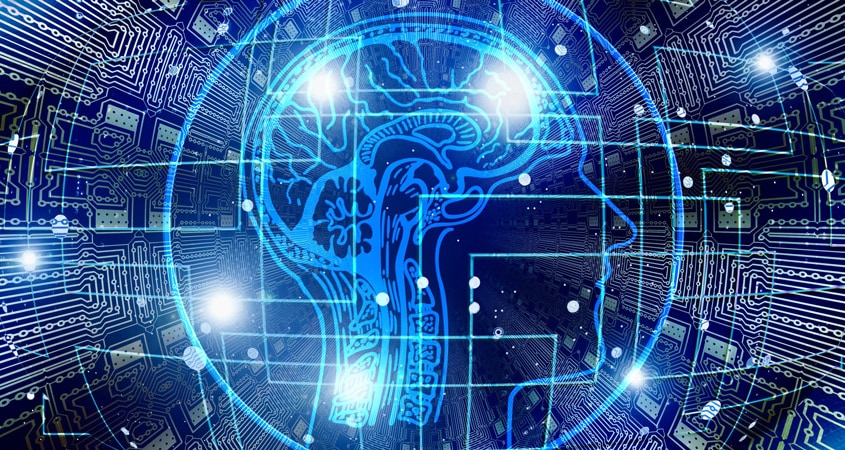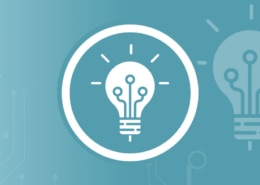Artificial Intelligence (AI) in Medicine
The term artificial intelligence (AI) comes up in the IT world time and time again – but what does it actually mean? The truth is, there’s no single generally accepted definition for artificial intelligence. In principle, the term describes systems which have the ability to perform activities normally associated with human intelligence, such as learning, logical deduction and understanding and reacting to one’s environment. AI isn’t one specific program, algorithm or something of that nature, but instead represents a combination of various methods used to carry out those complex tasks.
AI is also being applied increasingly in medicine as well, and many medical fields, including diagnosis, treatment and drug development, are already taking full advantage of the technology. However, the right AI method must be used in order to achieve ideal results.
Sissi Zhan, Medical Informatics Engineer and Consultant for Spirit in Projects
One area in which great hopes are attached to the application of AI is medicine. As a result, we’ll take a closer look at a few possible applications and the potential they bring.
AI Applications in Medicine
Diagnosis
Diagnosing diseases requires great knowledge and experience on the part of medical experts and consumes much of their time. Systems which use AI have the ability to learn that capacity, by receiving training which is based on large volumes of data.
Most AI applications for medical diagnosis are based on analyzing images and identifying the image content being depicted. Image analysis is frequently used (e.g. in X-rays) to identify characteristics which indicate specific diseases, and some of that technology is already quite advanced. For example, some AI systems already have the ability to identify, using skin images, cases of skin cancer with high accuracy. Those applications are based on image recognition and image processing. Key AI methods, which have led to extremely successful systems in this field, include neural networks and deep learning.
In addition to image analyses, diagnosis systems which are made available as chatbots and “communicate” directly with physicians and patients, are also in wide use. Such systems record a patient’s symptoms and use their underlying knowledge base to ask other relevant questions, which then leads to a diagnosis. To that end, methods for analyzing speech are used in combination with rule-based systems (such as expert systems) which emulate the learning and decision-making capacity of an expert.
Treatment
A suitable treatment strategy is established following a diagnosis. However, medications affect each patient differently in terms of efficacy and adverse effects. As a result, one individual treatment strategy for each patient would be ideal.
AI can help here, by combing through data and knowledge, and analyzing available health data and a patient’s case history to facilitate selection of the proper medication. For example, an AI application can process data, quickly see that a patient was previously unable to tolerate a certain medication, then suggest to the physician that a different medication be prescribed.
In addition, AI can help ensure that treatments are performed in accordance with the latest research. Such applications first analyze existing medical literature, then compile the latest findings on treatments and medications, making it possible for medical personnel to come up to speed on a treatment even if they have little time available.
Systems of this kind must have the ability to read text, identify the relevant content, then derive rules from it. As a result, they also need to be able to understand language as well as its structure and meaning. In addition, these systems need to build up a base of medical knowledge which gives meaning to any text content they find.
Drug Development
Normally the development and approval of drugs is a process that lasts for several years and is very costly. In addition, only a few medications successfully pass all test phases. AI can significantly speed up and improve this process, by supporting various activities over the entire drug development process.
The first step in the process is to identify what molecules (or so-called targets) need to be eliminated in order to treat a disease. A search for active ingredients which are effective against those pathogens is then carried out. AI can be applied in and can speed up both of these stages. It then becomes essential in subsequent pharmaceutical studies to find suitable participants, for a number of reasons including avoiding the distortion of study results. AI again can aid in the search for suitable subjects.
In contrast to more basic computer programs, AI systems can use machine learning to go through the multitude of available data, and can also process data which are structured differently. Systems then identify relevant patterns in the data and learn which characteristics indicate targets that show promise. Similarly, the systems can also predict the effectiveness of different medications on the target identified, and can also find suitable study participants.
Summary
Just the above examples of medical applications show how AI methods are already being used with success in fields which require the application of learning to especially large volumes of data. Before planning and defining your own AI application, it’s essential to have a solid overview of the various methods which are available in that field, as well as their possibilities and limits. It’s precisely such an overview which you’ll be able to acquire through our well-founded, practically-oriented AI training courses.






